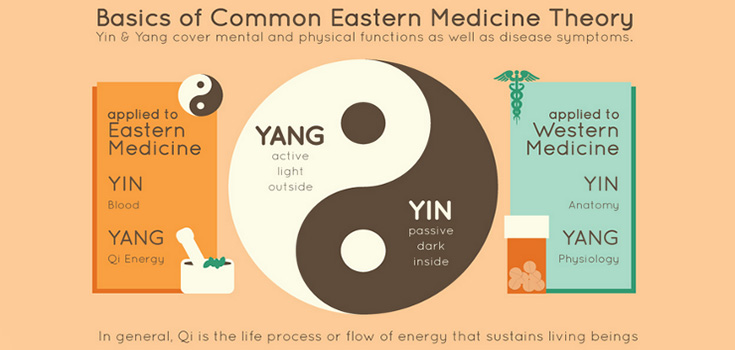Infographic | Eastern vs. Western Medicine

There is often a large barrier between those in favor of eastern medicine and those in favor of western medicine. Methods of healing are drastically different, with western medicine being much more ‘unnatural’ than eastern. Eastern philosophy uses whole-food formulas to nourish the body’s natural healing abilities while western philosophy isolates and forces therapeutic actions to ‘treat’ disease.
Eastern vs. Western Medicine
Eastern examination works with the elements earth, fire, wood, metal, and water to interpret the relationship between the physiology and pathology of the human body and the natural environment. Western medicine uses vital signs like height, weight, and body temperate, and general appearance for health examination.
Due to the harsh, ineffective, and dependency-driven aspects of Western medicine, Eastern medical philosophies are regaining popularity. Pharmaceutical drugs are vastly overused, leading to detrimental health effects. These drugs are dished out by profit-driven health officials who simply would not profit if the world were to awaken to the plethora of free health-promoting substances.
An infographic comparing Eastern and Western practices goes on to show how an Eastern practice like acupuncture can provide faster and safer treatments than pharmaceutical medications. A migraine can be treated with one acupuncture session, compared to western medicine where you would be dependent on harmful pain medications. Similarly, 8-25 treatments of acupuncture can treat back/neck pain, while western medicine would tackle the issue with more everlasting pain medication.
While Eastern practices are growing in popularity, Western medicine still blankets over the majority of the population. Even though Eastern medicine is still picking up, more and more people are deciding to cut out conventional medicine while turning to more natural treatments such as vitamins and foods like turmeric.

